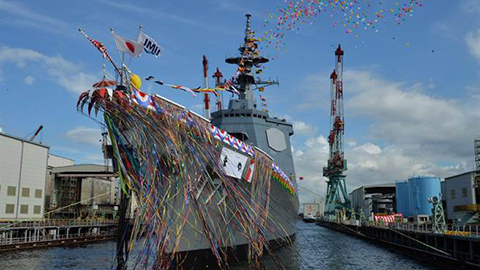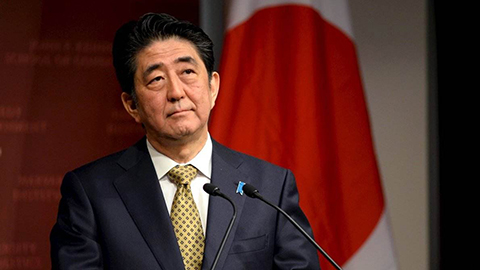CCTV News:After a lapse of more than ten years, another Aegis destroyer was launched by the Japanese Self-Defense Force, which is different from the active ships. This is the first ship in the history of the Self-Defense Force equipped with a cooperative combat system with the US military. If the launch of this ship at this time has something to do with the trade war initiated by the United States, you may be a little puzzled. Let’s find out.
On the afternoon of July 30, local time, the naming and launching ceremony of the latest Aegis destroyer of the Maritime Self-Defense Force was held here. This is the seventh Aegis destroyer built in Japan. The last time the Self-Defense Force had an Aegis ship in service, it dates back to 2008.

According to the usual practice, the Aegis destroyers of the Maritime Self-Defense Force are generally named after Japanese peaks, and the name "Moye" is taken from a mountain in Kobe City.
According to the information provided by the Self-Defense Forces, the standard displacement of the "Moye" is about 8,200 tons, with a total length of 170 meters and a maximum width of 21 meters. It is expected to enter service in March 2020, and the construction cost is about 168 billion yen (about 10.3 billion yuan).
After the completion of the "Maya", equipped with the latest version of the "Aegis" system, it can intercept ballistic missiles and cruise missiles at the same time; At the same time, it can also carry the "Standard -3IIA" interceptor jointly developed by Japan and the United States, and the interception height, range and power have been greatly improved; However, the Japanese and American media are most concerned about another major breakthrough of the ship — — The "Maya" is the first ship of the Maritime Self-Defense Force equipped with a CEC system with cooperative combat capability.
According to Asahi Shimbun, CEC system is a device that can share a large amount of data in an instant without satellite, and can be used to intercept enemy missiles and fighters. At present, some American ships and planes stationed in Japan have installed this system. Japanese media said that the "Maya" reflected Japan’s intention to continue to promote Japan-US military integration.
On the same day that the latest Aegis ship was launched, the Japanese Defense Ministry also made a major decision: that is, it chose the American arms giant — — The long-range identification radar developed by Lockheed Martin is used in conjunction with the land-based Aegis system.

At the end of 2017, the Abe government made a decision to introduce two sets of land-based Aegis systems. At that time, the Ministry of Defense estimated that the price of each system was about 80 billion yen, and then it was changed to 100 billion yen; With the finalization of the system radar model, the latest calculation of the Ministry of Defense shows that the unit price of land-based Aegis has risen to 134 billion yen, an increase of 67.5%.
Although the Ministry of Defense emphasizes that the reason for introducing the new radar is its long detection range, public opinion generally believes that the truth is not so simple: after taking office, US President Trump constantly pressured Japan to change the unbalanced bilateral relationship between the United States and Japan by purchasing more American weapons and equipment and reducing the tasks undertaken by the US military — — Taking the price increase of land-based Aegis as an example, the US Defense News pointed out that due to the heavy task demand in the Asia-Pacific region, the US Navy has been hoping to decentralize some anti-missile functions recently, and Japan’s rapid promotion of anti-missile system construction is undoubtedly good news for the US military.
Reuters believes that the Japanese government should summarize the defense budget for the next fiscal year before the end of August every year — — The Ministry of Defense has now made a decision to introduce anti-missile radar, which means that the relevant funding application will be successfully included in the defense budget for FY 2019; Abe plans to hold talks with Trump again during his visit to new york to attend the UN General Assembly in September: at that time, Abe can give Trump an account of the money spent on American equipment.
Behind Japan’s efforts to ingratiate itself with the United States is deep concern:
According to Japan’s "Daily News" report, after the United States announced that it would not impose import tariffs on automobiles during its economic and trade dialogue with the European Union, the Japanese government began to worry that the United States would turn its gun and aim its fire at Japan.
In fact, on July 26th, the day after Trump met with European Commission President Juncker at the White House, US Commerce Secretary Ross stressed that the 232 investigation on whether imported cars threatened US national security was still going on, and it is expected that there will be results in August.
The latest report released by the International Monetary Fund in July clearly pointed out that once the United States implements trade protection measures on imported cars, the country that will be hit hardest is Japan.